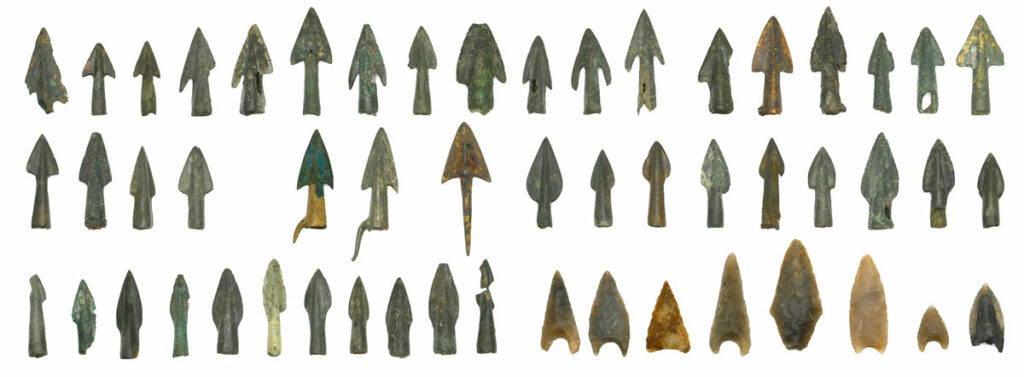BERLIN, GERMANY—According to a CNN report, a new analysis of bronze and flint arrowheads unearthed in Germany’s Tollense Valley suggests that the battle that took place there some 3,250 years ago was fought by local groups and an army from the south amounting to more than 2,000 people. Leif Inselmann of the Free University of Berlin and his colleagues were able to identify key shapes among the arrowheads recovered from the Bronze Age battlefield. The researchers then compared these shapes with more than 4,700 Bronze Age arrowheads from different areas of Central Europe. Some of the arrowheads matched those unearthed at the site, indicating that they were probably made and carried by local warriors. But other arrowheads, with straight or rhombus-shaped bases, side spurs, and barbs, resemble those found in what are now Bavaria and Moravia, more than 300 miles away. “This suggests that at least a part of the fighters or even a complete battle faction involved in [the] Tollense Valley [battle] derive from a very distant region,” Inselmann said. Arrowheads in this style have not been found in local burials, meaning that it is unlikely that they had been imported for local use, he added. Thomas Terberger of the University of Göttingen thinks the battle may have been sparked by a causeway built over the Tollense River some 500 years earlier. “The causeway was probably part of an important trade route,” he explained. “Control of this bottleneck situation could well have been an important reason for the conflict,” he concluded. Read the original scholarly article about this research in Antiquity. For more on archaeological evidence of the battle, go to "Around the World: Germany."
